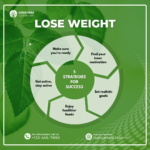The carnivore diet has been gaining popularity in recent years, with many reporting significant health improvements from eating only animal foods. If you’re considering trying this restrictive diet, here is a practical guide to getting started.
Understand Your “Why”
Before jumping into an all meat diet, it’s important to understand your motivation. According to Dr. Ken Berry, potential benefits of the carnivore diet include reductions in:
While weight loss may be a reason to try carnivore, having a more significant “why” will help you push through initial hurdles. If your only motivation is weight loss, the diet may be effective but unsustainable long-term. Focus instead on potential medical improvements.
Commit to 90 Days
It’s important not to quit the carnivore diet prematurely. Dr. Berry recommends committing to the diet for a full 90 days for several reasons:
Eat When Hungry, As Much As You Want
One of the most freeing aspects of the carnivore diet is that it removes the need for restrictive portion control or calorie counting. On this diet, you simply eat when genuinely hungry and eat as much as you desire at that meal.
There is no snacking between meals on carnivore. Many find it optimal to condense their food intake into a 4-6 hour time window, often called time-restricted feeding or intermittent fasting. For example, you may opt to eat a late breakfast at 10am and finish dinner by 4pm, resulting in just a 6 hour window for all calories. Or you may prefer a less rigid schedule with a longer 8-10 hour time frame for meals. Find the daily eating pattern that fits your needs and preferences.
Pay attention to how you feel in between meals. At first, you may need 2-3 substantial meals each day. But as the diet regulates appetite, many find they naturally gravitate to just two meals a day, or even one meal a day. Eat the number of meals per day that leaves you feeling satiated while still experiencing distinct periods of hunger in preparation for your next meal.
In summary, the basic tenets of eating on carnivore are:
This intuitive, hunger-based approach to eating may feel foreign at first. But by listening to your body’s signals, the diet leads to effortless weight management without constant deprivation.
On the carnivore diet, there is no need to calorie count or portion control. Simply eat until comfortably full when genuinely hungry. Do not snack between meals.
Focus on Fatty Animal Products
When it’s time to eat, simply sit down to a meal of meat, eggs, or other carnivore approved foods and eat until you feel completely satiated and full. Do not stop eating because of a calorie limit or small portion size if you are still genuinely hungry. The goal is to feel comfortable and energetically satisfied after each meal. Since carnivore foods are highly satiating, you will likely find you feel full faster than expected.
One advantage of carnivore eating is that your hunger signals tend to normalize. Compulsive overeating and snacking tendencies are often resolved. Without unstable blood sugars and energy levels from lots of carbohydrates, you can learn to eat intuitively again based on your body’s needs.
Allowed foods include:
Avoid all carbs including fruit, starchy vegetables, nuts, and seeds. Cook only in animal fats like tallow, lard, or duck fat. Prioritize fatty red meats which tend to be most nutritious.
Stay Hydrated
Drink plenty of water, sparkling water, unsweetened tea or coffee. Bone broth makes a nutritious beverage. Avoid all juices and sweetened drinks.
The carnivore diet is still unconventional enough that having a support system can be helpful. Find a friend to do the diet with you, join online groups, or use a health coaching group like the one Dr. Berry offers. Having camaraderie through the transition makes it easier to stick with.
What to Expect After 90 Days
After 3 months of strict carnivore eating, take stock. How do you feel? How have your symptoms or conditions improved? Many find that numerous health concerns are lessened or resolved after avoiding plant foods and eating only animal products for 90 days.
If you feel amazing, you may choose to remain carnivore long-term. But if you miss certain plant foods, you can begin carefully reintroducing them. The elimination aspect of carnivore serves to identify problem foods. After a carnivore reset, reintroduce foods slowly and one at a time. You may find that while you tolerate foods like berries or nuts well, grains or sugary fruits provoke inflammation. Adjust your diet according to your body’s feedback.
Foods to Avoid Permanently
Certain foods provide no nutrition and promote disease. After reintroduction testing, Dr. Berry recommends avoiding long-term:
Stick with animal fats for cooking, and avoid processed carbs and sugars. Then include other plants according to your tolerance.
Sample Meal Plan
Here is a sample day of carnivore eating:
Breakfast: 3 eggs fried in butter, fatty steak
Lunch: Burger patty topped with melted cheese, pork rinds
Dinner: Ribeye steak, salmon filet sautéed in olive oil, side salad with oil-based dressing
Beverages: Water, black coffee, bone broth
The carnivore diet may seem restrictive at first. But with guidance from experts and a strong support system, you can use it as a therapeutic elimination diet and then carefully expand your food choices based on your body’s feedback for a personalized way of eating. Commit to 90 days carnivore, then proceed from there.
Workout and Fitness News
Subscribe to our mailing list and get interesting stuff and updates to your email inbox.
Thank you for subscribing.
Something went wrong.
The form collects name and email so that we can add you to our newsletter list for project updates. Checkout our privacy policy for the full story on how we protect and manage your submitted data!
This content was originally published here.




















